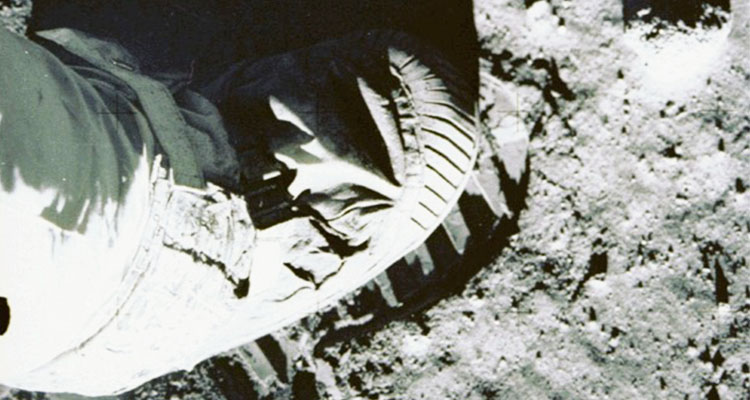In our last installment, Where Are the Footprints on the Moon?: Part I, we discussed that because the Earth’s moon is big and very far away, you just cannot see small objects on such a huge scale. The footprints of the Apollo astronauts, the flag and rovers, etc. on the lunar surface are simply too small on the surface of Earth’s moon. The moon is bigger than most people think and much farther away than we can easily grasp. This answer satisfies some people but not all.
Many people attending StarWatches often say something like the following, “OK, I get it, the moon is big and far away, but we are looking at it through a telescope! Telescopes are supposed to make distant objects look closer and small objects look bigger. So, the reasons for our being unable to see the Apollo artifacts on the moon should be nullified? Thus, we should be able to see the footprints on the moon, and yet we do not.”
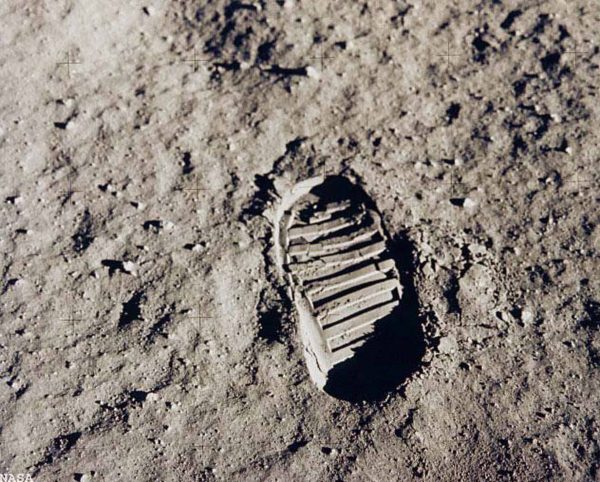
We can sum up and simplify this fundamental question as “why can’t we see the footprints on the moon?” This is a great question. A great question needs to be answered with patience and clarity. Let’s give it a try. If we can truly answer this question, we may be able — once and for all — to neutralize the conspiracy theorists that propose (with little to no real evidence) that the Apollo moon landings never happened. Questioning the moon landings is a favorite pastime for conspiracy theorists and has been asked since July 20th, 1969, when the first images of lunar footprints looked larger and left differing imprints in the lunar dust than the shoes or boots that were a part of the moon-walkers spacesuits. This conspiracy can be laid to rest with four words: “moon boot lunar overshoes.”
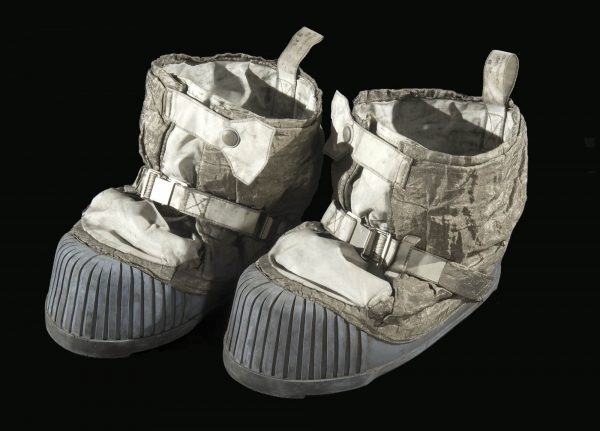
These moon boot lunar overshoes were worn over top of the regular boots worn by the Apollo astronauts. The idea for wearing lunar overshoes is similar to wearing galoshes here on Earth. We wear rubberized boots or galoshes over our shoes (thus the term “overshoe”) to protect us and our good shoes from high water and muddy conditions.
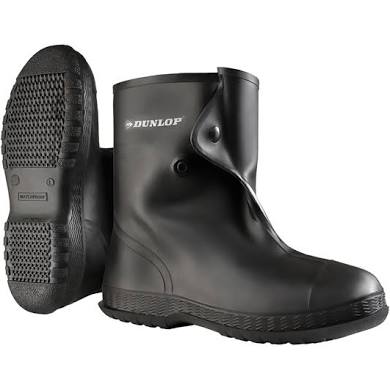
Similarly, the Apollo astronauts wore these lunar overshoes over their spacesuit boots to provide extra protection from the many unknown hazards of walking on the lunar surface. A rip, tear or hole in an unprotected spacesuit boot could cause painful decompression ending in death for an unlucky lunar explorer. The lunar overshoes left the very distinctive wide and oval footprints with wide traction-ribs that we see in all the Apollo exploration images. These lunar footprints are much longer and wider than the astronauts’ normal boot print sizes. These lunar footprints are still on the moon to this day (more about this in a future essay).
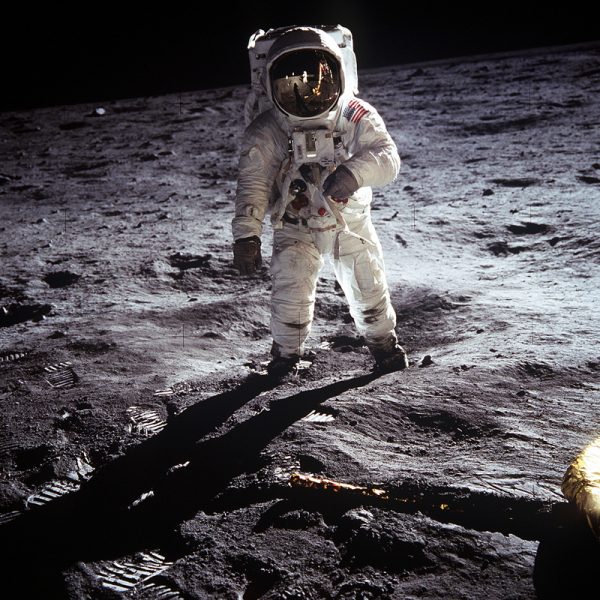
Apollo 11 moon boot lunar overshoe trivia: Neil Armstrong and Buzz Aldrin had street shoe sizes using U.S. men’s measurements of 9 1/2 and 10 respectively. Both astronauts wore the same size moon boot lunar overshoe, the model OMED. This means that if you see a moon boot footprint in the lunar dust at the Apollo 11 landing site it could have been made by either Neil or Buzz. The model OMED moon boot lunar overshoe that left the iconic imprints of the lunar footprints has eight traction ribs on the sole of the lunar overshoe and measures 33.6 cm (13 1/4 inches) long and 15.2 cm (6 inches) wide. This is a very large and distinct departure from the size, shape and texture of the spacesuit shoes worn by each astronaut and is no doubt the origin of many of the moon conspiracies, i.e., “see — just look at the footprints in the so-called lunar dust — these footprints are the wrong size, shape and tread imprint. This is sloppy, they could not even get the footprints right. Therefore, we never made it to the moon.”
Again, this can be cleared up in four words and their implication “moon boot lunar overshoes.”
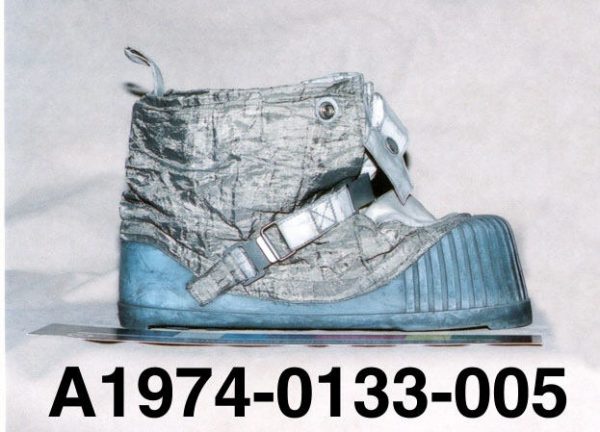
More moon boot lunar overshoe trivia: The Apollo moon-walkers moon boot lunar overshoes came in two sizes: the model OMED for medium astronaut feet below street shoe sizes (U.S.) 11 and model OLGE for astronaut feet size 11 and up. The model OLGE moon boot lunar overshoes footprints have nine traction ribs on the sole of the lunar overshoe and measures 36.8 cm (14 1/2 inches) long and 16.5 cm (6 1/2 inches) wide.
I would like to give a large dollop of thanks to my good friend Ted Brattstrom for finding the size of Neil Armstrong’s moon boot lunar overshoe. You may find it difficult to believe that the size of Neil Armstrong’s moon boot lunar overshoe and/or the dimensions of the footprint they left in the lunar dust creating the historic footprints on the moon are not easily found pieces of Apollo trivia data on multiple NASA websites. Check it out for yourself. Try to retrieve this information anywhere on the Internet. I don’t think NASA was trying to hide the data; more likely the information was just never transferred from NASA manuals to web pages on the Internet.
Now that we have a little more information about Apollo moon boot lunar overshoes worn by the moonwalkers that left their symbolic footprints on the lunar surface, we can better address the question: “Why can’t we see the footprints on the moon?” Let me, with your indulgence, coin a relevant unit of measure for the length of an object on the surface of Earth’s natural satellite, the moon (more properly referred to as Luna). This unit of lunar measure we will call the “Neil” after Neil Armstrong, the first human to ever make a footprint on another world. One Neil is the exact size of the footprints left on the lunar surface by Neil Armstrong’s moon boots or lunar overshoes model OMED or anyone on the lunar surface wearing the model OMED lunar overshoe. The length of one Neil is exactly 33.6 cm (13.25 inches). We will use the Neil unit as our minimum resolution (a sort of lunar picture element — lunar pixel) for determining whether or not a human artifact or natural object can be seen on the lunar surface.
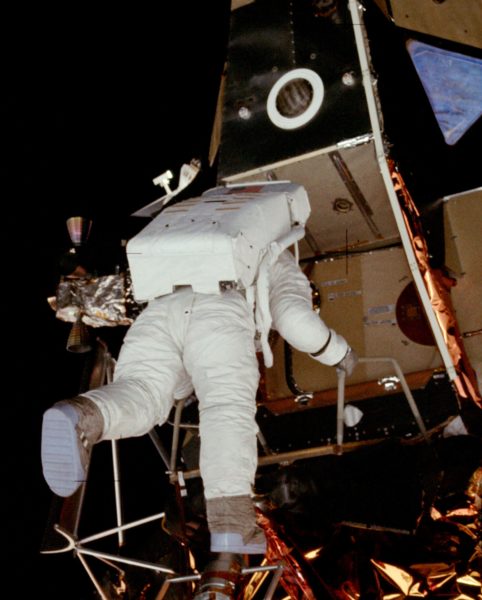
Angular resolution is the measure of the ability of an imaging device or system (i.e., human eye, camera or a telescope) to distinguish the small details of an imaged object. The measure of angular resolution of an object under perfect “seeing” conditions is constrained by the wave nature of the light being used to image the object. The wave nature of light creates diffraction interference patterns that limit the amount of detail that can be seen of an object. Ang ular resolution is also dependent upon the wavelength of light used for imaging and the diameter of the imaging system. If we keep the wavelength of light in the middle of the visible spectrum and reduce or ignore the blurring effects of air, a handy approximation or rule of thumb can be used to determine the angular resolution of the unaided human eye.
ular resolution is also dependent upon the wavelength of light used for imaging and the diameter of the imaging system. If we keep the wavelength of light in the middle of the visible spectrum and reduce or ignore the blurring effects of air, a handy approximation or rule of thumb can be used to determine the angular resolution of the unaided human eye.
The angular resolution of the average unaided human eye is about 1 arc minute. A circle consists of 360o (degrees) of arc. Each arc degree is divided into 60 arc minutes. If you do the math, the human eye’s limit of angular resolution, the smallest that it can distinguish, is an object 0.271 meters (27.1 cm) across at a distance of 1,000 meters (1 km). Notice, earlier we said that 1.00 Neil or the size Neil Armstrong’s model OMED lunar overshoe footprint, was 33.6 cm long. This means that at a distance of 1 km … the average human eye could just make out Neil Armstrong’s lunar overshoe bootprint (1.00 Neil) as an extended object measuring 1.24 arc minutes long.
In other words, the average human eye can just make out Neil Armstrong’s lunar overshoe boot print at a distance of 1 km. The moon, however, orbits at an average distance of 384,399 km!!!!! The average diameter of the moon is 3,747.2 km (2,158.8 miles). Doing the math, this means that the average diameter of the moon at this average distance is 0.5585o (degrees) or 33.51 arc minutes. This means that the average unaided human eye can see the surface of the moon as being 33.51 pixels across. This is why we can see large-scale light and dark lunar areas but not smaller individual craters and mountains when looking at the moon. Again, doing the math, each arc minute or unaided human visual pixel on the moon is 111.8 km (69.47 miles) across or 111,800 meters. This is approximately the driving distance from St. Clairsville to Pittsburgh. Anything smaller than this distance would be invisible to the average unaided eye. Once more doing the math, this distance measured in Neil units is 332,700 Neil. In other words, 1.00 Neil (the size of Neil Armstrong’s lunar footprints) is 332,700 times smaller than the smallest thing that can be seen on the moon with the average unaided eye.
The solution is simple — use an optical telescope. An optical telescope is a device that magnifies the image of an object. So, we just need a telescope that can magnify 332,700 times, and then we can see the Apollo footprints on the lunar surface. There are a few “howevers” to this line of reasoning. First-however: angular resolution is directly dependent upon the diameter of the imaging system. As a rule of thumb for telescopes, the highest theoretical magnification that a telescope can produce at optical wavelengths is 2 times for every mm of aperture (diameter of either objective lens or primary mirror). To get a magnification of 332,700 times would require a reflector optical telescope having a mirror with a diameter of 166,350 mm (166.35 m). Presently the largest optical telescope in the world is the Gran Telescopio Canarias found in La Palma on the Canary Islands having an aperture of 10.4 meters, 16 times too small to image a 1.00 Neil object on the lunar surface.
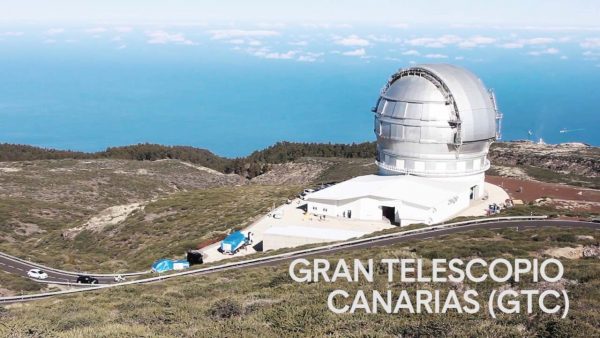
The American flag left by the Apollo astronauts measures 125 cm or 3.72 Neil, and the lunar rovers left by later Apollo crews measured 310 cm or 9.23 Neil long. Both artifacts are too small to see using the Gran Telescopio Canarias.
The second-however: we have been talking about a concept called the highest theoretical magnification that can only be achieved when the blurring and twinkling effects of the Earth’s atmosphere are negated. In reality, all Earth-based telescopes have a much lower practical magnification limit around 300 times. This means that under typical seeing conditions from the surface of the Earth and using a large telescope, the footprints on the surface of the moon are something like 1,000 times too small to be seen.
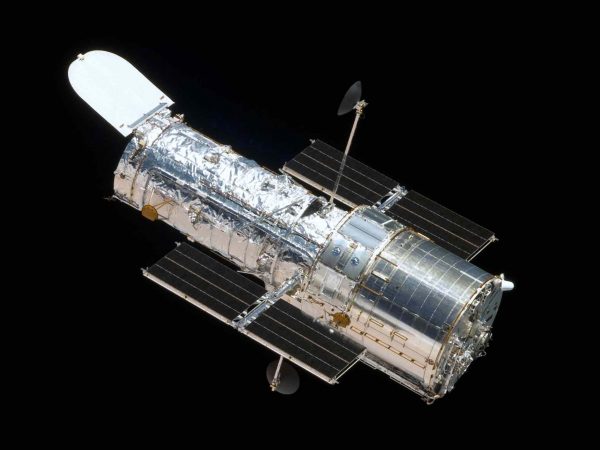
OK, what about the Hubble Space Telescope? It is above the Earth’s atmosphere and its blurring effects. Well, the Hubble Space Telescope has a primary mirror diameter of only 2.4 meters. The Hubble Space Telescope would need a primary mirror diameter over 69.3 times what it is now to see the Apollo footprints.
In conclusion, the Apollo footprints are there. To see the footprints on the moon we would need a Super Space Telescope. To see the Apollo footprints we will have to go back to the moon.
• Robert E. Strong received a bachelor of arts degree in physics with minors in mathematics and philosophy and has a master’s degree in space studies. Robert taught secondary school math and science in Benin, West Africa, (Peace Corps volunteer) and in American Samoa. He worked as a physicist in a research laboratory. Robert is president of the Near Earth Object Foundation dedicated to educating the general public about Near Earth Objects and providing public StarWatches. Robert and his wife Libby started the SMART-Center in 1994, a hub for science- and math-related activities for area schools, educators and the community. They also operate the SMART Centre Market — an interactive hands-on science store in Wheeling, featuring Orion telescopes, science toys and Kirke’s ice cream.


